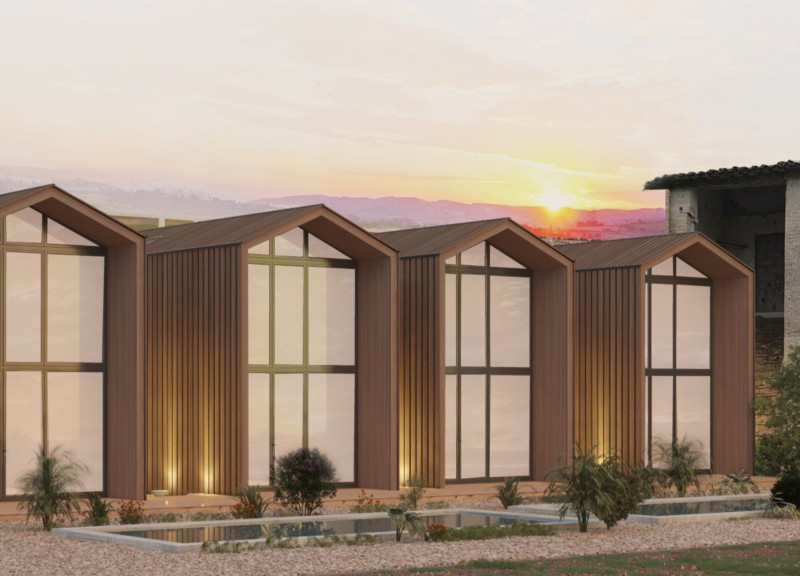5 key facts about this project
The TILI TRAMONTO project is located in the green Umbrian valley, designed to provide a distinct guest experience that combines accommodation and shared spaces. It relates closely to its natural environment while drawing inspiration from the architectural styles found nearby, particularly in the town of Assisi. The concept revolves around creating an atmosphere reminiscent of a small town, with connected structures that invite community and interaction.
Conceptual Framework
The design blends traditional architectural styles with modern elements, featuring a series of gable-roof pavilions that serve as guest accommodations. This layout respects local cultural heritage while incorporating contemporary comforts for guests. The arrangement promotes a strong connection with the surrounding landscape, enhancing views of the mountains and creating spaces conducive to socializing.
Functional Zones
The site is organized into four key functional zones that enhance the overall guest experience. The first zone includes a spacious wine-tasting hall with large glass walls facing west, allowing guests to enjoy organic wines while overlooking the valley. This gathering space is designed to encourage interaction and provide an inviting setting for visitors.
The second zone consists of five detached guest homes, each covering 66 square meters. These two-story structures connect directly to the tasting hall, allowing easy access while maintaining privacy for guests. Their design incorporates aspects of traditional architecture, blending into the landscape effectively.
Outdoor Integration
The third zone focuses on outdoor space, connecting the internal areas with external environments through gardens and communal areas. The Italian-style garden features various amenities, including pools and landscaped areas that invite guests to relax and engage with nature, enhancing their overall experience.
Restorative Approach
Finally, the project proposes a focus on restoring existing structures within the site. This approach aims to integrate these buildings into the garden landscape, maintaining continuity and minimizing disturbance to the environment. Such care for the surroundings reinforces the design's commitment to sustainability.
The light in the wine-tasting hall transforms the experience, where large windows frame views of the sunset over the valley, creating a space for guests to unwind and appreciate both the design and the beauty of the landscape.






















































